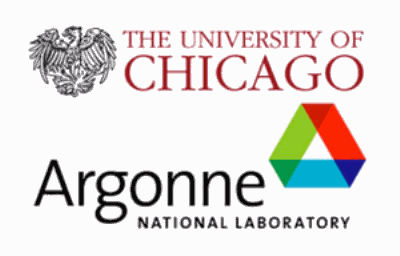A novel positron emission tomography (PET) system for molecular imaging is one of seven initiatives receiving funding from Strategic Collaborative Initiative (SCI) seed grants following a rigorous competition managed by Argonne National Laboratory and the University of Chicago. Wah-Keat Lee of the Argonne X-ray Science Division (XSD) is the Argonne Investigator on the project, and Chien-Min Kao, Associate Professor of Radiology, is the University of Chicago Investigator.
The award of $75,000 will support the development of a prototype configurable (flexible) PET detection system that is compatible with XSD beamline 32-ID at the U.S. Department of Energy’s (DOE’s) Advanced Photon Source at Argonne. The project goal is to be able to do both PET and x-ray computed tomography in vivo, simultaneously.
The SCI program, begun in 2005 when the University of Chicago renewed its contract with the DOE to manage Argonne, encourages intellectual synergies that support the strategic objectives of both institutions. The program funds not only collaborative research projects, but also strategic joint appointments and joint institutes. The University extended the program to Fermilab when it became co-manager of that laboratory in 2006. Together, both Argonne and Fermilab attract approximately $950 million in sponsored research funding.
The full list of collaborative seed grants can be found here.
The Advanced Photon Source at Argonne National Laboratory is one of five national synchrotron radiation light sources supported by the U.S. Department of Energy's Office of Science, Office of Basic Energy Sciences (DOE-BES). The APS is the source of the Western Hemisphere's brightest high-energy x-ray beams for research in virtually every scientific discipline. More than 3,500 scientists representing universities, industry, and academic institutions from every U.S. state and several foreign nations visit the APS each year to carry out applied and basic research in support of the BES mission to understand, predict, and ultimately control matter and energy at the electronic, atomic, and molecular levels in order to provide the foundations for new energy technologies and to support DOE missions in energy, environment, and national security. To learn more about the Office of Basic Energy Sciences and its x-ray user facilities.
Argonne National Laboratory seeks solutions to pressing national problems in science and technology. The nation's first national laboratory, Argonne conducts leading-edge basic and applied scientific research in virtually every scientific discipline. Argonne researchers work closely with researchers from hundreds of companies, universities, and federal, state and municipal agencies to help them solve their specific problems, advance America's scientific leadership and prepare the nation for a better future. With employees from more than 60 nations, Argonne is managed by UChicago Argonne, LLC for the U.S. Department of Energy's Office of Science.

